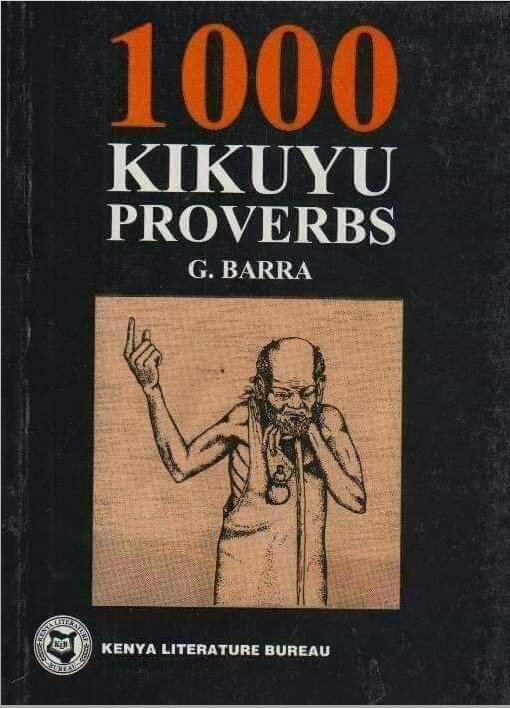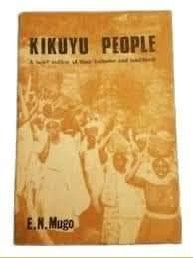
Our Saturday 4th December part 3 of our marriage series is here. In this post, we explain what items were given in Rūraacio, the meaning of each, Ngurario, the Agìkūyū wedding day, consummation of the wedding, and the couple settling down into marriage life. Tag a friend.. 







Marriage series part 3.
We commenced the Rūraacio aspect of the Agìkūyū marriage. In part 3, we focus on the Rūraacio items, Ngurario, the actual wedding day and the couple settling into marriage life. As we will note, Ngurario contrary to popular thought,
We commenced the Rūraacio aspect of the Agìkūyū marriage. In part 3, we focus on the Rūraacio items, Ngurario, the actual wedding day and the couple settling into marriage life. As we will note, Ngurario contrary to popular thought,
did not mean the end of the dowry process. Since the process and settling in of the married couple is quite lengthy, we will focus on major themes.
The amount of Rūraacio
The amount of Rūraacio varied/varies) from one clan to another and from district to district so we can't
The amount of Rūraacio
The amount of Rūraacio varied/varies) from one clan to another and from district to district so we can't
say that this was the actual amount that was given. BUT according to Agìkūyū law, the Rūraacio amount required was 30 sheep and goats. Sometimes, it would be 30-80 sheep and goats. When a cow was included in the Rūraacio, it valued at 10 sheep and goats,
and Ox valued at 5 sheep and goat There were also several presents exchanged between the two families. All of which constituted part of the Rūraacio. There were items in the family lineage and clan that had been set from generations, this too had to be given.
There were specific items given to the maternal aunties and so on. It is also important to note that Rūraacio among the Agìkūyū was never one sided. Remember we discussed the core reasons for Rūraacio. Therefore there was participation from both sides of the families.
Overall, the parents and the clan from both sides, were deeply involved in their parents union and in the whole Ūgūrani process.
The Rūraacio items
1. Sheep and goats- Mbūri Mìrongo Kenda Mūiyūru given to the parents of the girl. This was given to seek the parents blessings.
The Rūraacio items
1. Sheep and goats- Mbūri Mìrongo Kenda Mūiyūru given to the parents of the girl. This was given to seek the parents blessings.
2. 10 sheep and goats -( Mbūri ikumi cia ugendi) specially given to the girl's father and his brothers so that their blessings was sort. His daughter ( the one getting into marriage) would carry the blessings into the family of the young man.
3. 10 sheep and goats - (Mbūri ikūmi cia Ūihwa) given to the girls maternal uncles to seek their blessings.
4. 5 male sheep - Ngoima cia Mūhìrìga. These were given to the clan to seek their blessings. Ideally, among the Agìkūyū, Rūraacio is largely a family and clan affair
4. 5 male sheep - Ngoima cia Mūhìrìga. These were given to the clan to seek their blessings. Ideally, among the Agìkūyū, Rūraacio is largely a family and clan affair
5.1 goat of witness to the occasion -Igongona ria Mbūri ya Ūira.This goat was slaughtered as a testament to the Rūraacio.
6. Agìkūyū wedding vows-Igongona ria Ngurario
According to the custom of the girls clan, when the amount of Rūraacio required for sealing the engagement
6. Agìkūyū wedding vows-Igongona ria Ngurario
According to the custom of the girls clan, when the amount of Rūraacio required for sealing the engagement
ceremony, had been sent, a day was fixed for the actual engagement ceremony. Relatives were called to the girls homestead, where a feast was held. This includes slaughtering of one fat sheep ( Ngoima ya Ngurario.)
This sheep had been sent from the boys homestead specifically for this purpose.Ngurario was not the end of the dowry process, but a part of it. It's was the Agìkūyū wedding vows (Mìhìtwa wa Kìhìko gìtheru kìa Ūgìkūyū.) Ngurario served these purposes;
1. To publicly announce that the girl was engaged and had taken the engagement and marriage vows.
2. Provide the relatives on both sides with an opportunity of meeting and knowing each other more.
3. It was the ceremony of the mìhitwa ya kìhìko kìa Ūgìkūyū ( Marriage vows)
2. Provide the relatives on both sides with an opportunity of meeting and knowing each other more.
3. It was the ceremony of the mìhitwa ya kìhìko kìa Ūgìkūyū ( Marriage vows)
7. A ram for burning the roasting plaltorm- Mbūri ya gucina ndara- This was slaughtered so as to wade off any evil spirit that could have come during the whole Ūgūrani process. Mbūri ya gūcina ndara was given together with Njohi ya kūhoya mūrìmi ( beer to ask for the cultivator.
At this juncture, the young man was allowed to take the girl to her home. She was his bride but they had not yet consummated their marriage.
The wedding day
On the wedding day, which was kept secret from the girl, the boy's female relatives set out to watch the girls movements.
The wedding day
On the wedding day, which was kept secret from the girl, the boy's female relatives set out to watch the girls movements.
She could have been in a garden, weeding, or In a forest. On funding her, they returned with her, in a dramatic manner, carrying her shoulder -high. A true moment of acting. The girl struggled and refused to go with them protesting loudly and even seeming to shed tears ,
while the women giggled joyously and cheered with songs and dances. This went on until the girl reached the boy's homestead and went into her mother in law's hut.
Kìrìro
For about 9 days the bride would entertain her visitors, girls of her age group, with songs called Kìrìro.
Kìrìro
For about 9 days the bride would entertain her visitors, girls of her age group, with songs called Kìrìro.
They were a collection of songs to 'mourn' the 'loss' of services, companionship she had with her friends. Which by marriage had been passed to another age group and clan.
Kĩriro is traced to the foremother of the Agìkūyū who for 9 days also mourned the what was soon to
Kĩriro is traced to the foremother of the Agìkūyū who for 9 days also mourned the what was soon to
happen the 'loss' of her virginity as well as leaving her parents home.
The brides hut ..
On the wedding day, the bride was taken to the mother in laws house. It is while she was at the mother's house, and as the ceremonial Kìrìro was going on that the bride groom
The brides hut ..
On the wedding day, the bride was taken to the mother in laws house. It is while she was at the mother's house, and as the ceremonial Kìrìro was going on that the bride groom
assisted by his friends built her a hut. It was the duty of the bridegroom to build his bride a hut. He was assisted by his friends and the hut building took about 4 days.
Consummation of the marriage
This happened on the 5th day, after furnishing of the new hut had
Consummation of the marriage
This happened on the 5th day, after furnishing of the new hut had
been completed. This first sexual encounter between the two was regarded as ceremonial sexual intercourse. The man had to have full sexual intercourse with his wife twice. Neither more or less. It is important to note that in the normal course of events, the bride was a virgin.
Her husband on the other hand, had most likely had full intercourse with the wives belonging to his own initiation group hence he knew the correct procedure connected with full intercourse having learnt the art from them. Sexual intercourse was a form of Igongona.
The next morning, having had intercourse with his bride twice, he was to clear his throat so that his mother would hear the signal and know the sacrifice has been completed. Until this signal had been given, no one would go near the hut. It would also mean that a bridegroom did
not achieve the second act with his bride. Which was unfortunate and wound have to have one of his friends intervene.
The ceremony of retracing her steps to her mother's home (Gūcokia makinya kwa nyina) the bride was escorted to her parents home by one of the younger wives of
The ceremony of retracing her steps to her mother's home (Gūcokia makinya kwa nyina) the bride was escorted to her parents home by one of the younger wives of
her father in law to visit her mother.
This ceremony was done in recognition of the fact that a married woman's first duty in paying visits was to her mother. When she arrived home again, on the 8th day after she had been taken from her own home, she and her husband had full
This ceremony was done in recognition of the fact that a married woman's first duty in paying visits was to her mother. When she arrived home again, on the 8th day after she had been taken from her own home, she and her husband had full
ceremonial intercourse twice. After this they could assume Normal married life..
The ceremony of Kūrugūria nyūmba ( A house warming party for the new hut.)
This happened several days after the second act of ceremonial sexual intercourse. This ceremony enabled the young couple
The ceremony of Kūrugūria nyūmba ( A house warming party for the new hut.)
This happened several days after the second act of ceremonial sexual intercourse. This ceremony enabled the young couple
start a normal married life. A small ram to spill the new homestead (ya kūgurarìria mūciì) was slaughtered outside the brides hut. The bride was to eat some of this meat. The first time she had eaten meat in her own home. And by doing so she showed that she was now a full member
of the family she had married into.
Join us next Saturday for part 4. We focus on the various forms of marriages among the Agìkūyū.
Sources of information
Information obtained from
✓ Oral interviews with our consultant elders.
Join us next Saturday for part 4. We focus on the various forms of marriages among the Agìkūyū.
Sources of information
Information obtained from
✓ Oral interviews with our consultant elders.
✓ The Southern Kikuyu before 1903 volume 2 by Louis Leakey
✓ Kĩrĩra kia Ūgikuyu By MN Kabetu
✓ Facing Mount Kenya By Jomo Kenyatta
These books are available and can be bought from us. Place on order via DM, SMS/WhatsApp to 0790-2241


✓ Kĩrĩra kia Ūgikuyu By MN Kabetu
✓ Facing Mount Kenya By Jomo Kenyatta
These books are available and can be bought from us. Place on order via DM, SMS/WhatsApp to 0790-2241



You can also join our Online Gìkūyū classes for adults. Registration for the intake is open all the way to all the January 8th see poster for details. See the poster for the details. 

• • •
Missing some Tweet in this thread? You can try to
force a refresh























